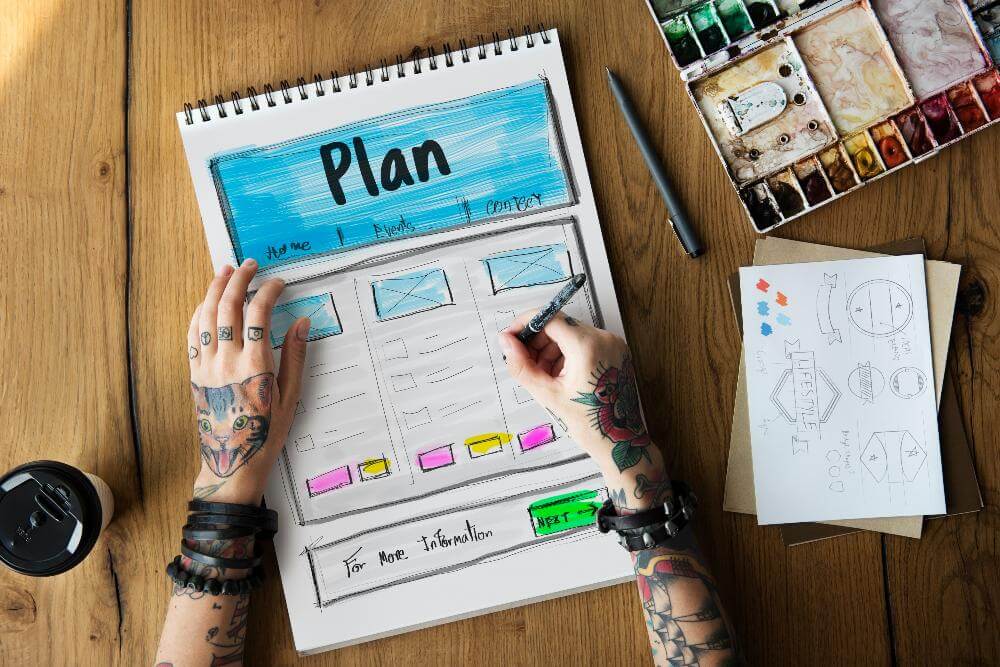Much has been heard in recent years about design thinking or Design Thinking, but there are few who really control it and know what it can bring to their business. This work philosophy includes all those strategic, practical and cognitive processes that influence the development of concepts and activities related to design. A theory that defends that there is an unlimited source of ideas around us and that we can all be creative and enhance that capacity to innovate.

Index of contents
What is Design thinking for?
How do I start developing Design thinking?
develop empathy
Update your brainstorming processes
Try trial and error
What is Design thinking for?
More and more companies are committed to implementing this thought that defends that there is a heart, an essence, behind the design. This allows them to carry out closer and more emotional creative processes that manage to connect with the public.
design thinking
In addition, Design thinking serves to motivate and grow work teams since it is based on creating safe spaces in which team members feel free to present their ideas creatively and effectively. All this is complemented by new technologies that allow companies to carry out actions remotely and optimize all the advantages that the network offers them.
As you can see, it is much more than a work methodology, it is a process aimed at changing mentality through the development of different skills. Imagine that you have to solve a problem at work and you don’t know where to start.
Using Design thinking you can carry out a procedure that allows you to find solutions in a simpler way. How to do it? Breaking down the problem into smaller parts, so that we can analyze, understand and work on them individually.
This technique is carried out together with other members of the team so that, together, it is possible to find a solution. In this way we work on empathy, commitment and teamwork and we can implement a way of working aimed at finding solutions.
How do I start developing Design thinking?
For a long time, this methodology has been oriented towards product development, although, little by little, it has been gaining ground within companies, becoming a way of working that is applied at all levels.
Companies like Google use Design thinking as an integral part of all their internal actions as it allows them to generate ideas and improve processes. A series of innovations that significantly influence employee productivity and improve the user experience.
We normally understand empathy applied to our personal relationships. But it is a very useful ability in any area of our lives, including work. What is the purpose of a product or service? When we start a project we always focus on how to make our products attractive so that customers are interested in buying them, but it is important to put ourselves in the consumer’s shoes and ask how the product we have created will solve their needs.
How can we develop empathy? Start by listening to your team and creating workspaces where they feel free to express their ideas and opinions. They are the ones who know the product best and know how it can connect with your target audience. Once this exercise has been carried out, go to your clients, what do they need? What problems do they have and how could you help them solve them? There are many channels through which you can receive feedback from your audience, use them to listen, learn and move forward.
Update your brainstorming processes
Surely you have brainstormed ideas in your company and you know what they are for and how they can help you, but have you really learned to get the most out of them? Brainstorming processes allow us to listen to different points of view that are put in common and allow a global and broader vision of the solution.
brainstorming
If you have already started them at some time, you will know more or less how your team works and the way each member behaves during it. Now it’s your turn to go one step further. Involve your employees in the process, motivate them to go even further , to think big, present much more ambitious ideas that force you to “think outside the box” and develop your creativity and innovation.
It is important that, previously, there is that space for reflection in which everyone feels comfortable and can express their ideas freely without fear of being judged or ignored. In this way you will be able to increase the creativity of your team.
Try trial and error
In any project you start, there are many possibilities to succeed, but also some not to do it. How can we combat failure? Mainly accepting it as a fundamental part of our activity. In order to move forward, it is necessary to check which ideas work and which do not.
So start by losing the fear of being wrong. This experimentation phase is the perfect opportunity to check if the ideas that you have proposed in the previous phase are feasible and can offer good results.
Design thinking invites us to test, experiment and innovate to turn our ideas into prototypes to check the final result of those concepts. Later, we will be able to test them internally and with a small group of participants, to detect failures, points for improvement and possible solutions in order to launch a final product that can work well on the market.
Design thinking is an innovative methodology that will accompany you and help you solve problems and provide solutions. By following these three steps, you and your team will learn to develop creative and innovative proposals that will help you work better and whose results will be reflected in the products and services that you offer to your clients. Start now to implement its benefits in your team and you will see how creative power grows within your company.